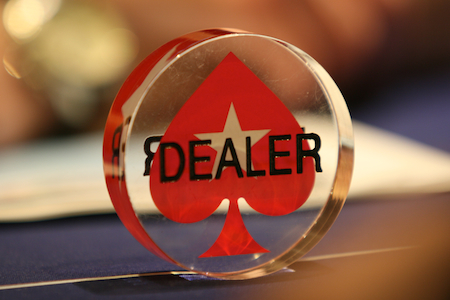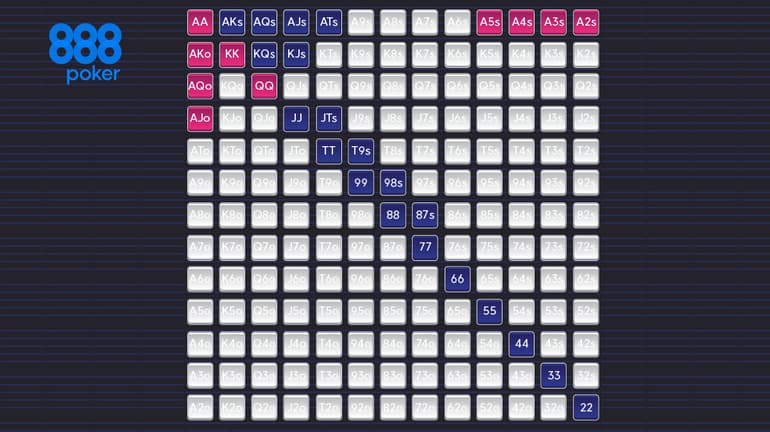- Win The Button Poker Strategy Tactics
- Win The Button Poker Strategy Against
- Win The Button Poker Strategy Games
- Win The Button Poker Strategy Cheat
If you’re an experienced tournament player, then you’re probably accustomed to the dynamics of attacking and defending blinds. Late in a tournament, the big blind usually represents a large percentage of anyone’s stack. If you can spot a player who folds his big blind liberally, then you’ve got a golden opportunity to accumulate chips with very little risk simply by raising whenever that player is in the big blind.
Conversely, you don’t want to get a reputation as someone who won’t defend his blinds, because then everyone will be trying to steal from you. Fighting back vigorously against attempts to steal your blinds is known as defending your blinds, and it’s something that tough players do to deter steal attempts and face less competition for their blinds.

A less understood but equally important concept is defending your button when stacks are deep. At this stage of a tournament, the blinds are relatively trivial, and profit comes primarily from playing in position, not from stealing blinds. This article will explain the importance of defending your button and provide some examples of how and why to do it.
But, if one person deals all the time, then the button-position will rotate the table over time, otherwise the dealer job passes around. Understanding where you are in relation to the dealer/button will help you develop a strategy to win Texas Hold’em. Ashley Adams is the author of Winning 7-card Stud (Kensington 2002), Winning No-Limit Hold’em (Lighthouse 2011), and most recently Winning Poker in 30 Minutes a Day (D&B Publishing 2020). We discuss check raising strategy in more detail in our post over on unfeltedpoker.com. Tip 10: Develop A Good 3betting Strategy. Whilst 3 betting aggressively is a strategy many players employ, especially in online poker circles, failure to apply optimal 3 betting strategies has certainly led to a lot of spewy poker. With online poker becoming increasingly tighter overall, it’s just too unlikely that you’ll get a call from a dominated hand with A-K. While flipping a coin for an early double-up might be an acceptable risk to you the inherent variance simply doesn’t make this a long-term winning strategy. Early round Sit and Go strategy in a nutshell. Six-time Poker World Series winner Daniel Negreanu has spent decades honing his poker strategy, which includes everything from value bets to how to avoid tilt and proper bankroll management. Advance your poker game from Daniel Negreanu’s MasterClass and make every hand your best hand.
The Importance of the Button
If you play or used to play online and use tracking software such as Poker Tracker or Hold ‘Em Manager, take a moment to look at your data by position. Your win rate should increase as your position improves, with a disproportionate amount of your profit coming from the button. Though this should be true regardless of stack sizes, the effect should be more dramatic if you filter for hands where everyone’s stack is large relative to the blinds. In my case, after filtering for hands where there are no antes and my stack size at the start of the hand is greater than 50 times the big blind, my win rate in the cutoff is 32 BB/100 (big blinds per 100 hands), whereas on the button it is 54 BB/100.
Imagine how much greater your win rate would be if you could play the button twice per orbit. This is essentially what happens if the player on your left folds almost always to your cutoff raises. You can take advantage of this by raising more hands from the cutoff and realizing the benefits of the best position at the table twice every orbit. For me, that would be the equivalent of increasing my win rate in the cutoff by 22 BB/100. Of course I’ll only be in that position once out of every nine hands, but that still increases my overall win rate by 2.5 BB/100, which is quite significant.

Poker is a zero-sum game, so those additional 22 BB/100 have to be coming from somewhere. Perhaps you guessed it: that’s mostly profit that could belong to the player on the button. If only he played his position more vigorously, he could do from the button whatever it is that I’m doing from the cutoff to win that additional 22 BB/100. By effectively yielding his button to me when he doesn’t have a premium hand, he is missing out on a lot of potential profit!
I look at the button as a gold mine that you have to share with eight other prospectors. When it’s your turn to reap the gold, you can’t let the others beat you to it. An aggressive player on your right who regularly raises the pot ahead of you needs to be discouraged with frequent calls and re-raises. After a while, he will either stop trying to steal your button or routinely lose money trying to play out of position against you. Either way, you win!

Three-Betting
When it comes to deterring a frequent raiser, nothing is more effective than aggressive three-betting. Although calling and playing in position can be profitable as well, it isn’t nearly as punishing since it enables your nettlesome opponent to see the flop with whatever junk he raised. By re-raising your button against a wide opening range, you force your opponent either to fold immediately and give away all of his equity in the pot or put more money into the pot from out of position.
It’s important to realize that if your opponent chooses to call your re-raise, this is not a particularly bad outcome for you, even if you were bluffing. He is still faced with the prospect of playing out of position against you on three streets, and even if you don’t actually have a big hand, you can represent one, meaning that you should have a lot of good bluffing opportunities.
Consequently, your three-bet does not need to be so large that it forces your opponent to fold all but his strongest hands. Something like two and a half times the original raise is sufficient to put pressure on an aggressive opener without risking too much of your own stack or compromising your ability to maneuver and use your position post-flop. Risking fewer chips will enable you to three-bet more often and with weaker hands, which is a great tool to have at your disposal.
Because you are offering your opponent enticing odds, you should three-bet with hands like suited connectors that have the potential to make both strong hands and strong draws, for semi-bluffing, if called. You can also re-raise hands that are well ahead of the opener’s range but easy to draw out on, such as A-J offsuit and 2-2. Think of this as a thin value bet.
Of course you’ll make this same re-raise with legitimately strong hands such as A-K and A-A as well. In fact, you’ll find that aggressively re-raising your button will help to get you more action when you re-raise really big hands, as long as you play them the same way you would your bluffs.
Calling
Although three-betting is generally a superior option for defending your button, there are times when calling is better. Some hands are simply undesirable for three-betting. Medium pairs like 7-7 are a good example. Re-raising generally causes your opponent to fold hands that you dominate and call with pairs that dominate you or with two overcards that are essentially a coin flip against you. Worst of all, they open you up to a four-bet from hands like A-A that just might lose a big pot to you if you flop a set. Unlike smaller pairs, medium pairs are resilient enough to sometimes call a bet or two post-flop when you know your opponent’s range is wide, so I generally prefer calling to three-betting with them.
Win The Button Poker Strategy Tactics

Broadway hands like K-J and A-T, especially when suited, also tend to play better in single-raised pots. They are too good to fold to a player with a wide opening range, which probably includes lots of hands you dominate such as K-T, Q-J, J-T suited, etcetera. Unless the original raiser is very loose, he will presumably fold most of the hands you dominate to a re-raise but continue with hands that dominate you. Rather than manipulate his range in this way, it’s generally better just to call the raise and leave open the possibility of flopping top pair with a better kicker, which is of course a very profitable situation.
One possible drawback of just calling your button against a late position raise is that it may entice a player in the blinds to re-raise you both on a squeeze play. If you believe one or both of the players in the blinds is capable of such a play, you should call slightly less often with your weaker hands but occasionally flat call with really big hands like A-A and A-Ks in the hopes of inducing such a move.
Conclusion

Win The Button Poker Strategy Against
Whether you re-raise or call, the important thing is not to fold when you have the benefits of a good hand and superior position. Even if you aren’t confident you’re a better player than the original opener, you should be willing to get involved rather than yield your button without a fight. It’s a valuable piece of real estate, and you need to play it – and protect it – accordingly. ♠
Win The Button Poker Strategy Games
Andrew Brokos is a professional poker player, writer and coach. He’s a member of Poker Stars Team Online and blogs about poker strategy on ThinkingPoker.net. Andrew is also interested in education reform and founded an after-school debate program for urban youth.